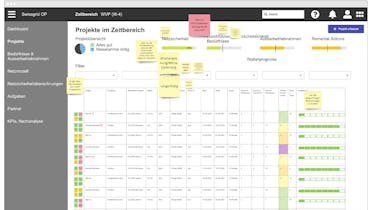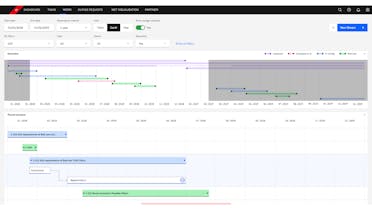
The Swiss electricity system is facing major changes: the power plant park is evolving significantly due to the promotion of renewable energies and the gradual phasing out of nuclear energy. At the same time, demand for electricity is rising as combustion motors and oil heating systems are replaced. The requirements placed on grids are therefore undergoing a dramatic shift: the transmission system needs to be modernised (see SFOE report) in order to be able to transport electricity safely and reliably in the future (see Grid of the future).
Grid expansion is comparable to open-heart surgery. Power lines and transformers must be temporarily switched off so that work can be carried out safely. In this case, Swissgrid talks about outages. At the same time, grid security must be guaranteed. Maintenance or construction work must not be responsible for any power failures anywhere. That is why Swissgrid plans outages with the utmost care and with the support of specialised software. This software is currently being redeveloped, as Swissgrid is expecting an increase in outages due to the urgent need for grid expansion.
«Planning shutdowns would be unthinkable without software support.»
Oliver Haubensak, Swissgrid
«We can only handle the expected increase in outages efficiently with good software support,» says Oliver Haubensak, Head of Short-term Operational Planning at Swissgrid. To cope with the complex planning of outages, he has introduced «Vision Operational Planning», a central software project at Swissgrid. The aim is to use this software to provide the employees responsible for planning outages with the most targeted support possible for their decision-making. This is necessary because planners have a very low margin for error in their work – similar to that of air traffic controllers.
The advanced software will ensure that outages can be planned early on and with a high degree of automation, whilst complying with all the specifications for ensuring grid security during construction work.
Involving employees at an early stage: with user-centred design for user-friendly software
Swissgrid is dependent on the fact that the new software for planning outages meets the exact requirements of its employees. This will ensure that employees do not make any mistakes when working with the software later on, thereby jeopardising grid security. Employees are therefore closely involved in the development of the project to check the content, structure and appearance of the new software. This is achieved with the user-centred design method, which Swissgrid is implementing with the help of the Zeix agency.
«The point is that the digital product is designed from the user side (front end) and visualised very early on in the process.»
Benedikt Heil, Zeix agency
Involving users at an early stage means that very precise specifications can be given for technical implementation, because it is clear what the application and the processes within it should look like and how they should function. «The great thing about this approach is that even before the complex software development stage, we can be sure that our new application will be useful. That is because we know that it will meet the requirements of our users,» says Haubensak.
How is user-centred design implemented?
Specialists from Zeix watch Swissgrid employees during outage planning (1). Inefficient or safety-relevant behaviour is recorded. The results of this observation stage are combined with the employees’ requirements, resulting in a very clear picture of the relevant functions for the new software (2). Unlike with Swissgrid’s current procedure, these requirements are not documented by drawing up detailed descriptions and lists, but by creating a prototype of the future application (3).
This prototype is developed iteratively: Zeix presents the users with new prototype sketches, which validate the practicality and technical feasibility of the project (4). The team keeps on repeating these steps, and a very detailed picture of the new application gradually emerges.
Users are involved in different ways. Sometimes they look at the prototype and give feedback, and sometimes new participants are invited to join the project and operate the prototype in a real everyday situation in the form of a «usability test». This is a very practical way of testing the suitability of the system.
As the iterative improvements are integrated, the image of the new application becomes so clear that there are hardly any questions about functionality left during the actual development of the software. This also ensures that the product will ultimately meet the users’ expectations.
The user-centred design method guarantees that the resulting solution offers employees the best possible support for their work. Swissgrid is convinced that it is well equipped for a challenging future and will be able to operate the grid in a fail-safe manner, even if extensive construction work is carried out.











